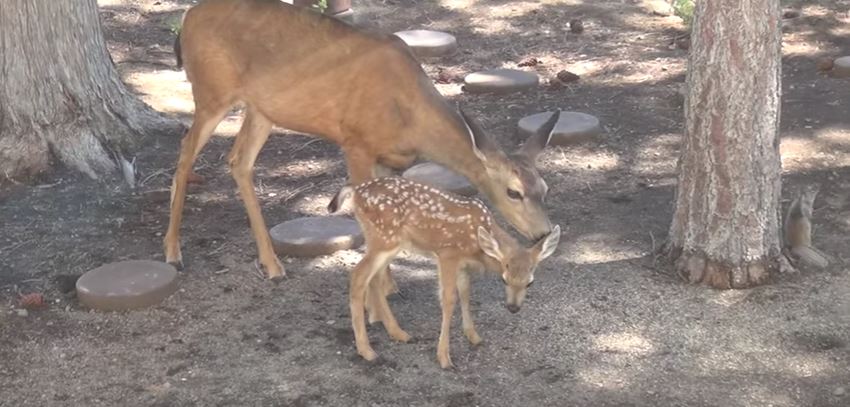About Deer: Appearance, biology, life cycle, habitat, diet, behavior

Deer are ruminant mammals, and they form the family of the Cervidae. There are two types of deer and they all grow and shed antlers every year. Deer have always appeared in art and they also have a role in religion and mythology. They contribute to the economy, and this involves the skins that are sold as buckskin, the meat in venison, and the antlers that are used as handles of knives.
Deer like to live in the areas that have different biomes, and these range from the tundra to the tropical rainforest. Even though they are normally associated with the forest, most of the time they live in the transitional areas found between the thickets and the forest for cover and the savanna or prairie. Most deer species are found in savanna habitats, forests and also mixed coniferous areas.
The appearance of the deer includes powerful and long legs, a diminutive tail, and long ears. Deer have broad variations in their physical proportions. The largest deer in existence is a moose.
Deer are known to be browsers who feed only on leaves. They do have a small stomach given their ruminant standards, and they have high nutrition requirements. The deer choose to eat fresh grasses, young leaves, lichens, and fungi with other digestible shoots. The deer needs to have a large amount of phosphate and calcium in order to support the growth of its antlers.
The cervids are called a uniparental species since the fawns are cared for only by the doe. The doe may have only a fawn or two at the same time. The gestational period takes over 10 months. After a year, the young male will go away and will never come back to see his mother, but a female will be coming back to form a herd with the mother.
The deer start their year in the spring, and they will be trying to get back the weight lost in the winter, so they will eat more high energy plants. In the summer, the deer will start to browse the plants.
Go back to the How to Get Rid of Deer page or email us if you have any other questions about About Deer: Appearance, biology, life cycle, habitat, diet, behavior
About Us
We are the Pest Education Network, a non-profit organization that focuses on wildlife and pest removal education. Our approach utilizes Integrated Pest Management, a strategy advocating prevention and humane methods.


